Crop Report
Overall, conditions in northern IL have remained hot and dry. We have consistently been missing the rain to the north or south, and the area is sliding back into a predominantly D1 drought. The rain we received a week ago has helped most fields recover from any drought stress, but the fields that have missed rain the entire season are struggling badly with skinny, withered, pineapple corn. There are a few chances of rain predicted in the near future, but overall it appears we will be seeing more of the same hot and dry weather.
Corn is still varying throughout the region, with some fields in Lake and McHenry counties being slowed and stunted around V6, while an overwhelming majority of the region is sitting around V9–V10. Some fields are at V12 with spike leaf present, but those fields are few and far between as I am writing this. The corn has jumped in height on average, but I am expecting a shorter, stunted corn plant this year overall due to the weather conditions. I have yet to find disease in any of the fields I have scouted this season in the area. The hot and dry conditions are suppressing any disease emergence on the corn, but areas that have been hit with isolated storms could still have disease starting to propagate. Overall, corn is short, thirsty, and disease-free going into the Fourth weekend.
Soybeans are varying between R1 and R2. Flowers were present in every field I scouted. The soybeans are short overall, again due to the environmental conditions. Fields have not canopied very well — if at all — yet this season. I have not seen disease in the soybeans, but over the last couple of weeks there has been plenty of burn damage, which has been exacerbated by the hot and dry conditions. The beans should grow out of it, like they always do, but there is a lot of burn and cupping visible in fields.
Wheat is all but ripe across the north. Feekes 11.4, or full maturity, is upon us in most fields, and harvest should start rolling in the next handful of days depending on folks’ Fourth of July plans. Disease is all but nonexistent in the fields I’ve seen. The dry spring and summer never allowed the fungus and bacteria to take hold, and it should be a clean crop overall this summer.
Almost every growing season, farmers reach a stretch where the crop is “holding on.” That description fits much of northeast Illinois, as additional acres fall into the abnormally dry to moderate drought category on the U.S. Drought Monitor. With high daytime temperatures, corn plants are starting to “wrap” to conserve moisture. We are starting to see tassels appear on the earliest planted corn as it reaches a critical, yield-determining stage. Tar spot is starting its spread across Illinois, and statewide reports can be followed on the Corn ipmPIPE website: https://corn.ipmpipe.org/tar-spot/. This week, we are also in the window for applying white mold fungicides. The Crop Protection Network provides a risk assessment tool, using current weather data to help in fungicide decision-making: https://connect.doit.wisc.edu/cpn-risk-tool/. Limited precipitation has allowed for a quality second cutting harvest. Happy Fourth of July to all!
Across much of the area, there are entire fields of soybeans exhibiting cupping. The widespread nature of the symptom could point to environmental stress as the cause, potentially from the hot and dry conditions over the past week and a half. Many soybean fields are still not canopied.
Corn has greatly increased in height recently due to the accumulation of over 240 GDDs during the past week and a half. I have not seen, and there have not been any reports of, disease in corn thus far this season.
Things are moving along in western Illinois. North of Monmouth, we are seeing some tassels on corn as well as nearing flowering on the earlier planted soybeans. Conditions have been dry and not quite as hot as last week, but still hot. Precipitation has been scattered throughout the region as well, with some areas getting 0.5 inches or more while others get nothing. Overall, conditions look on track. We have had confirmed tar spot in Warren and McDonough Counties this year, so we encourage everyone to make sure they are walking their fields. Keep an eye on the Crop Protection Network tar spot map as well: https://cropprotectionnetwork.org/maps/tar-spot-of-corn.
Current conditions in Champaign County are mildly dry. Last week’s heat wave has broken slightly—just in time to pick back up for the Fourth of July weekend—with recent highs in the 90s and lows in the 70s giving way briefly to more moderate temperatures in the mid-80s and lows in the 60s. Rainfall has been limited, with the area consistently missing spotty showers, leading to visible stress in corn due to heat and lack of moisture. Soybeans are in the R1–R2 growth stages, and corn is progressing from V10 to R1 (silking). Most post-emergence herbicide applications are complete, though some fields are being evaluated for resprays due to waterhemp escapes, and fungicide planning is underway. Japanese beetles are present in both corn and soybeans; corn rootworm beetles and grape colaspis have also been noted in corn.
Crop is really progressing with the heat. Early-planted beans are starting to close rows, and post applications have been made. Constantly scouting beans for waterhemp escapes. Corn is 3–6 leaves from tasseling. Found tar spot in most of the corn across a three-county area. You really have to look to find it, but it’s definitely present. Of the 15 corn fields I’ve been in so far, I’ve found it in 13. It doesn’t seem to be hybrid-specific—same infestation level across multiple brands and hybrids.

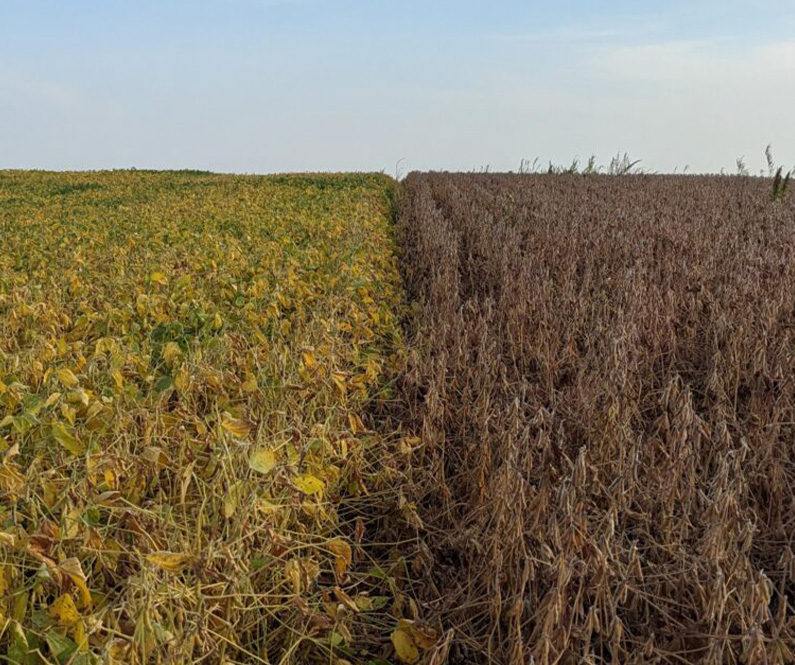
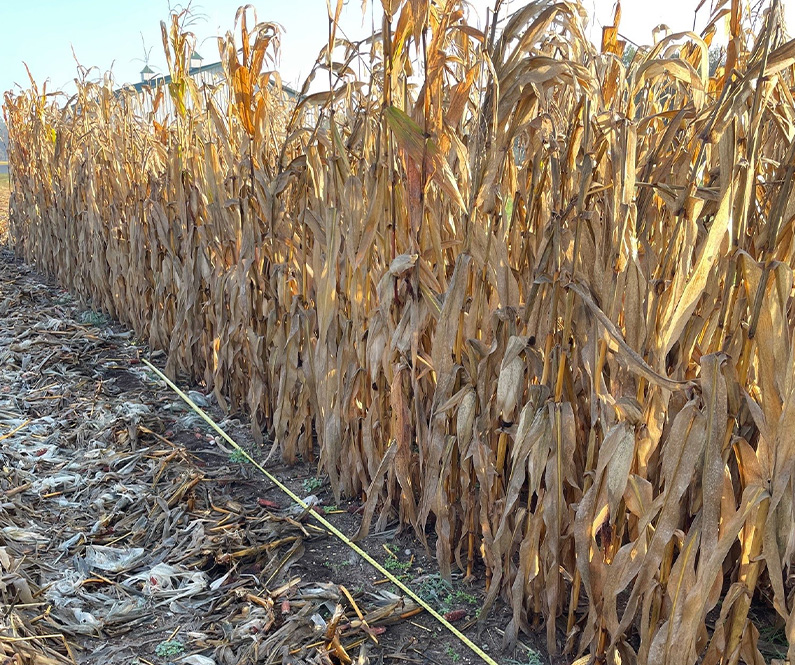
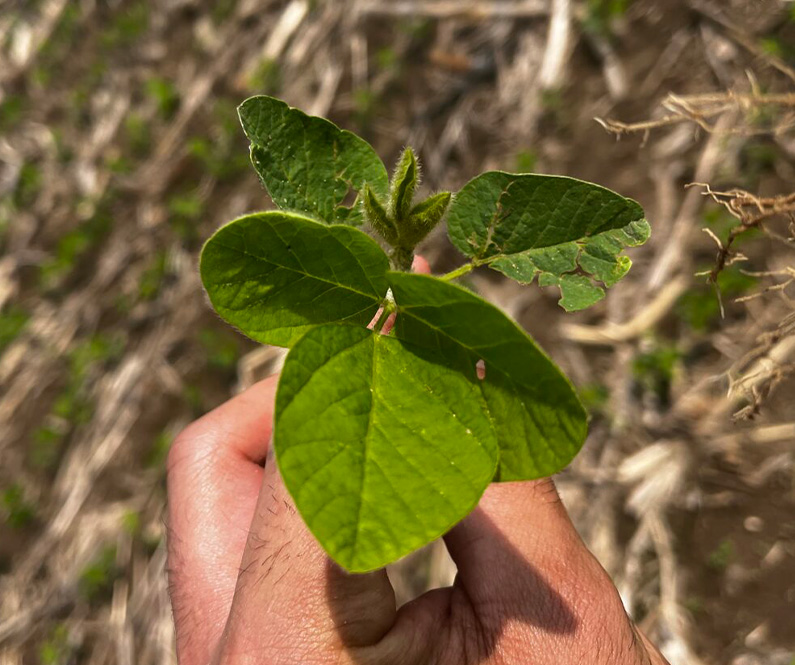
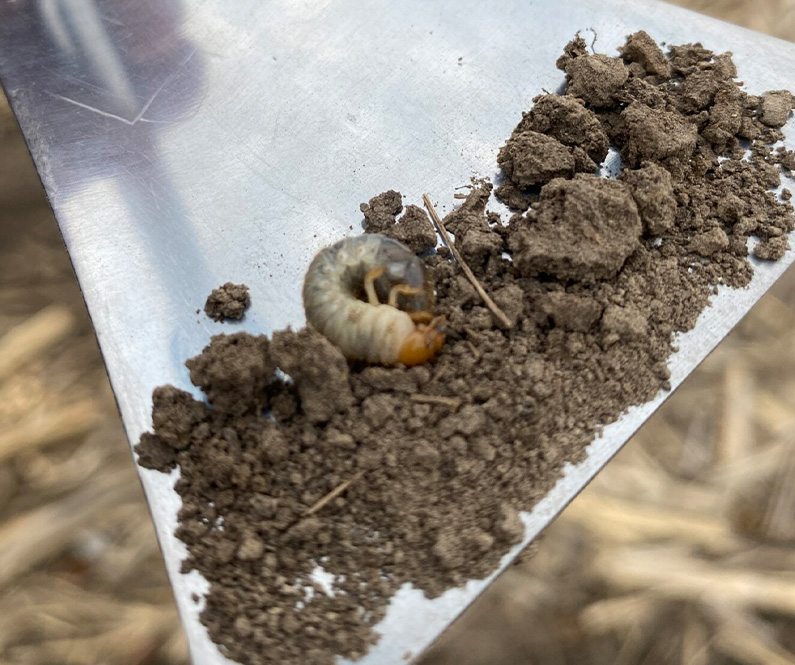
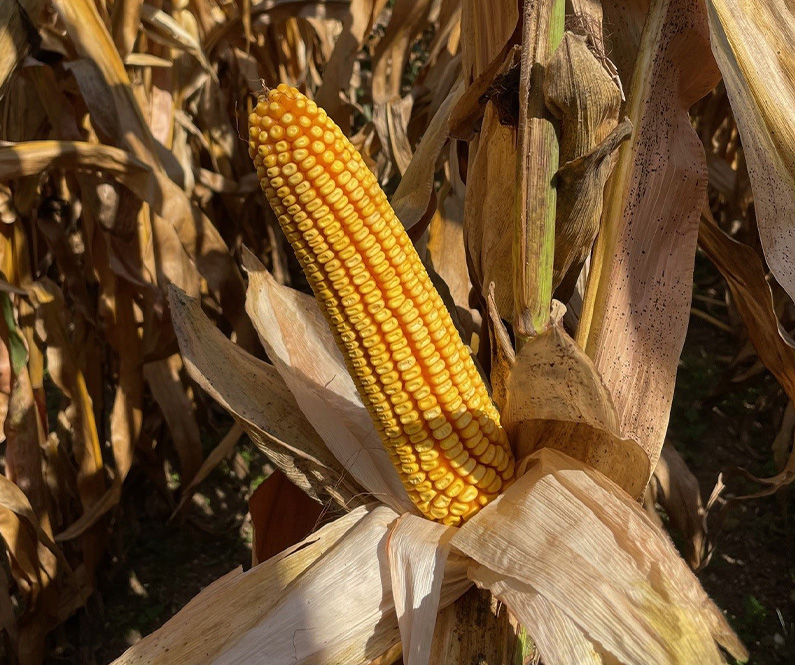
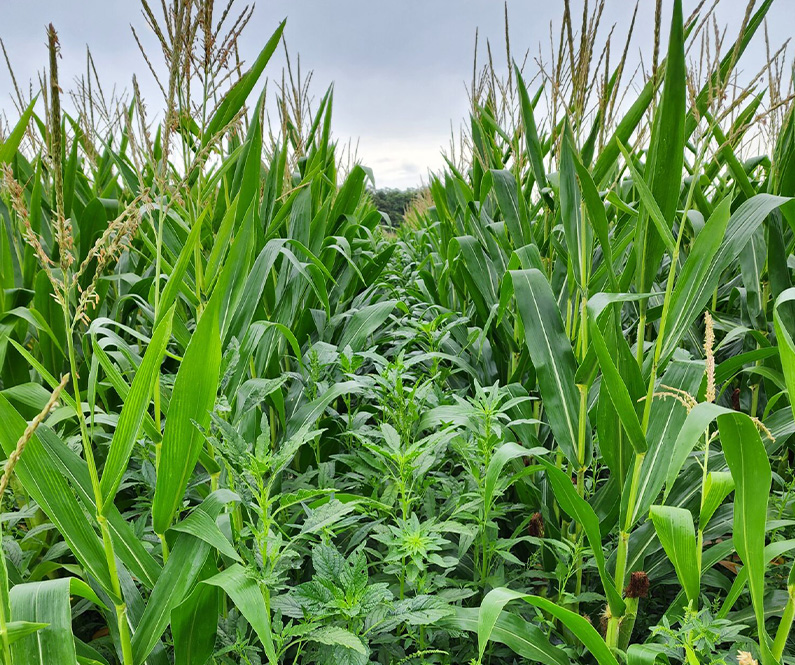
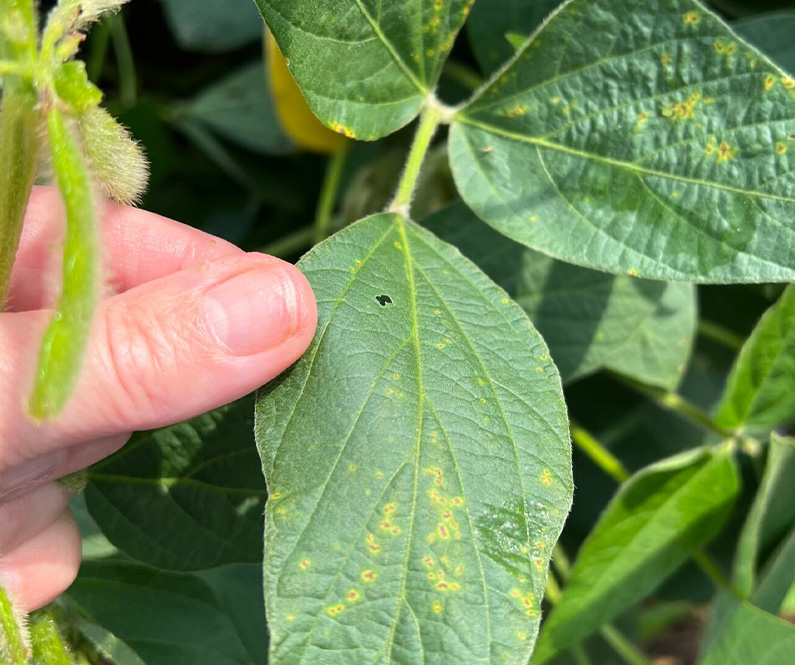
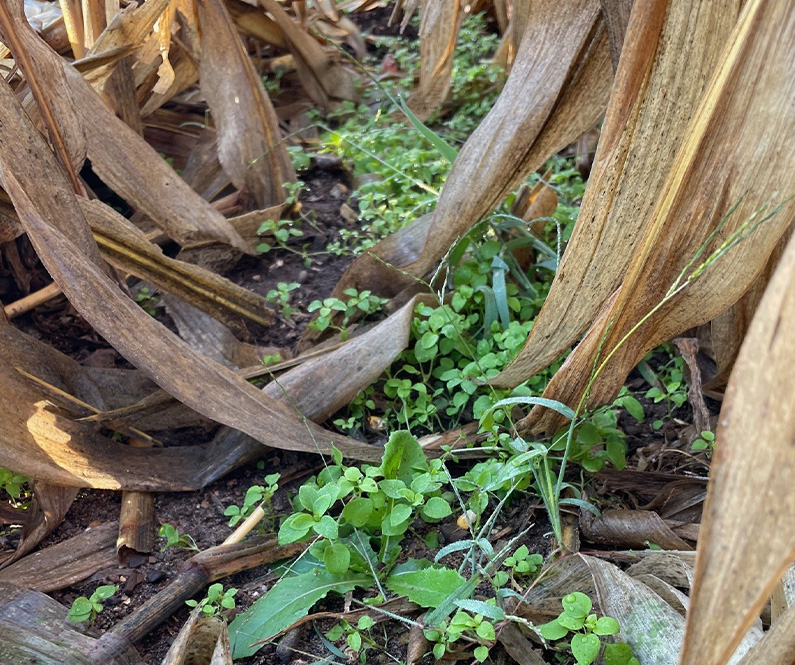
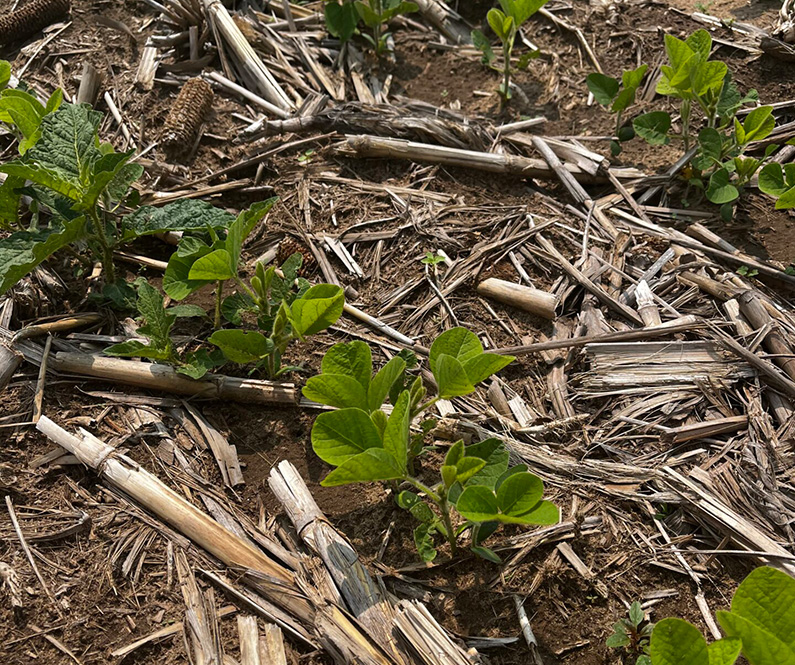
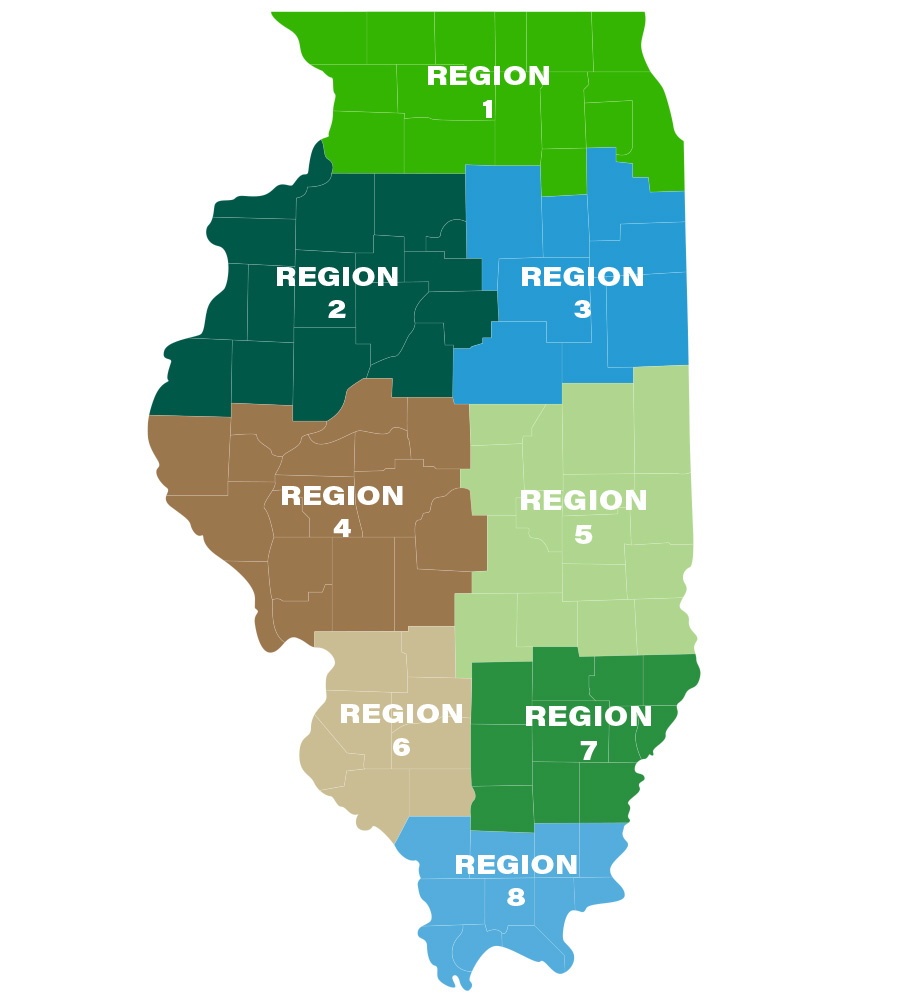

 and then
and then